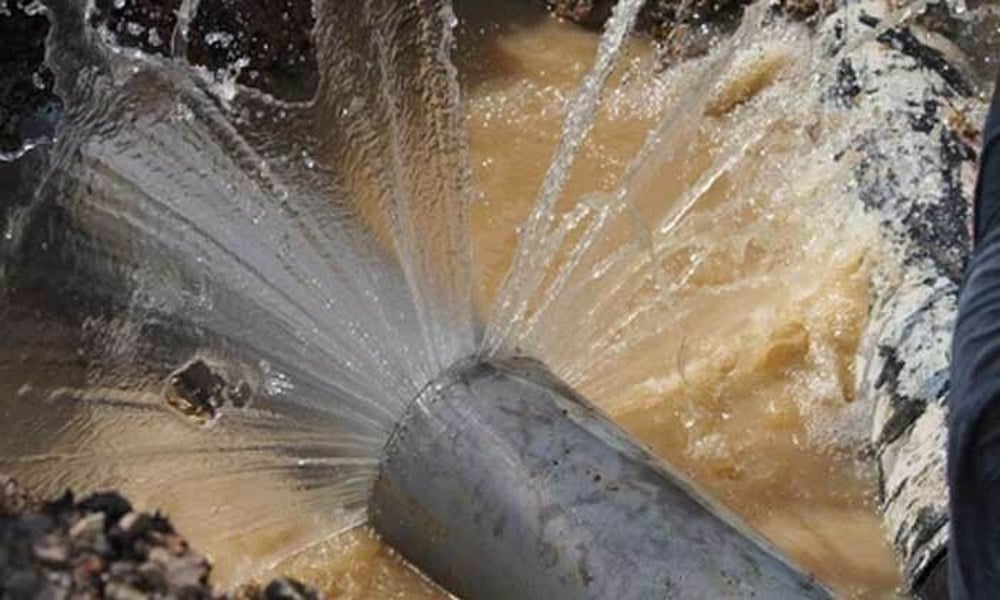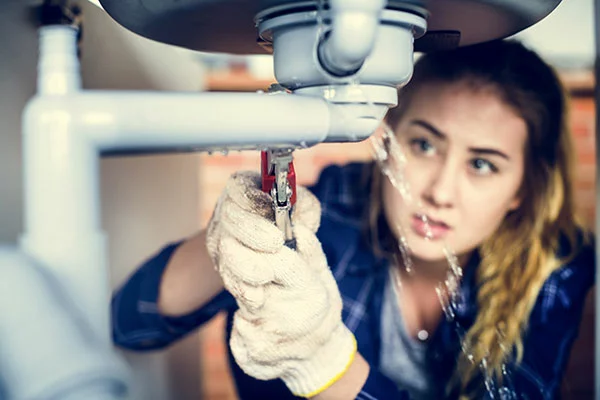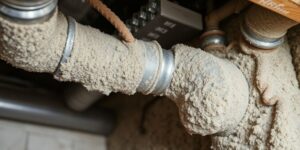Emergency Plumbing 101: What to Do When a Pipe Bursts

Imagine you’re relaxing at home when suddenly you hear an odd hissing noise or notice a growing water stain on the ceiling. It hits you—a pipe has burst. Your first instinct may be to panic, but having a clear action plan can make all the difference. Do you know what steps to take to minimize damage and guarantee a swift resolution? Understanding the immediate actions to take, such as shutting off the water and evaluating the damage, is essential. But what are those essential initial steps, and how can you effectively manage this plumbing crisis?
Recognize the Signs
When it comes to emergency plumbing, recognizing the signs early can save you a lot of trouble and expense. You don’t want to wait until water is gushing all over your floors. Start by paying attention to unusual sounds like banging or rattling in your pipes. These noises could indicate loose fittings or high water pressure that might lead to a pipe burst.
Next, check for water discoloration. If your water turns a rusty brown, it could mean corrosion, which weakens pipes over time and increases the risk of leaks. Also, keep an eye out for water stains on walls or ceilings. These marks often suggest a slow leak that, if ignored, could escalate into a bigger problem.
You should also notice if there’s a sudden drop in water pressure. This could be a sign of a blockage or a leak somewhere in your plumbing system. Damp or musty smells are another red flag; they often accompany hidden leaks behind walls or under floors. Finally, don’t overlook puddles of water around your home. They’re usually a clear indication that something’s amiss.
Shut Off the Water

One of the first steps in handling a plumbing emergency is to quickly shut off the water supply. When a pipe bursts, water can rapidly flood your space, causing damage.
Locate the main water shut-off valve in your home—usually found near the water meter, in the basement, crawl space, or where the main water line enters your home. It’s vital to familiarize yourself with its location before an emergency arises.
To shut off the water, turn the valve clockwise. If it’s a gate valve, you’ll need to rotate it several times until it’s tight. For a ball valve, turn it a quarter turn until it’s perpendicular to the pipe. Verify the water stops flowing entirely.
If you feel resistance or the valve is stuck, don’t force it; you could break it, worsening the situation.
If you’re unable to shut off the water at the main valve, consider using localized shut-off valves found under sinks or behind toilets. These can minimize damage temporarily.
It’s important to act swiftly during a plumbing emergency, as every moment counts in preventing extensive water damage to your home.
Drain the System
After shutting off the water supply, the next vital step is to drain the system to prevent any remaining water from causing further issues.
Begin by turning on all the faucets in your home, starting with the lowest level, such as a basement or ground-floor sink. This will allow gravity to help you clear the pipes.
Don’t forget to flush all the toilets to empty the tanks as well. By doing so, you’re ensuring that any trapped water has a way to escape.
Next, check your home’s hot water heater. If it’s safe to do so, turn off the power supply or gas valve to avoid damage.
Open the heater’s drain valve to release water into a bucket or direct it outside through a hose. This step is essential as hot water heaters can hold a significant amount of water even after the main supply is shut off.
Assess the Damage
With the system drained, it’s time to evaluate the extent of any damage. Start by inspecting the affected area carefully. Look for visible cracks or holes in the pipe, as these will need attention.
Check the surrounding walls and floors for water stains or dampness, indicating potential water seepage. It’s essential to identify all areas impacted by the burst to prevent further issues.
Next, assess any nearby electrical outlets or devices. Water and electricity are a dangerous combination, so verify there’s no contact. If you’re unsure, it’s safer to turn off the electricity in that section of your home until you can be certain.
Keep an eye out for mold or mildew, as these can develop quickly in moist environments. Mold can pose health risks, so take any signs seriously.
If you notice any musty odors or see visible growth, it might be time to call in a professional.
Temporary Fixes
When facing a plumbing emergency, implementing temporary fixes can help prevent further damage until professional help arrives.
First, locate the main water shut-off valve and turn it off to stop the flow of water. This is vital in minimizing water damage.
Next, open all faucets to drain remaining water from the pipes. This will reduce pressure and prevent further leakage.
Once you’ve stopped the water, use a pipe clamp or rubber patch to seal the burst area. Wrap a piece of rubber, such as an old inner tube or thick glove, around the burst section. Secure it tightly with a clamp or hose clamp.
If these materials aren’t available, duct tape can suffice as a short-term solution. Make sure the tape is wrapped tightly around the pipe to hold the rubber in place.
For minor leaks, applying epoxy putty can also be effective. Knead the putty until it’s pliable, then apply it over the leak, smoothing it out to guarantee a watertight seal.
Allow it to cure as per the instructions. These steps will help you manage the situation and reduce potential water damage while waiting for a professional plumber.
Contact a Plumber
In the midst of a plumbing emergency, it’s crucial to contact a plumber as soon as possible. Acting quickly can prevent further damage and get your home back to normal faster.
First, identify the issue and provide as much detail as possible when you call. This helps the plumber prepare for the job, saving time and possibly reducing costs.
Research and select a reputable plumber or emergency plumbing service in your area. Check for licensing and experience, as these indicate reliability and competence.
Read reviews if you have time, but prioritize getting professional help promptly. When you call, make sure to explain the situation clearly and ask for an estimated arrival time. This will help you gauge how much time you have to manage the issue on your end before they arrive.





